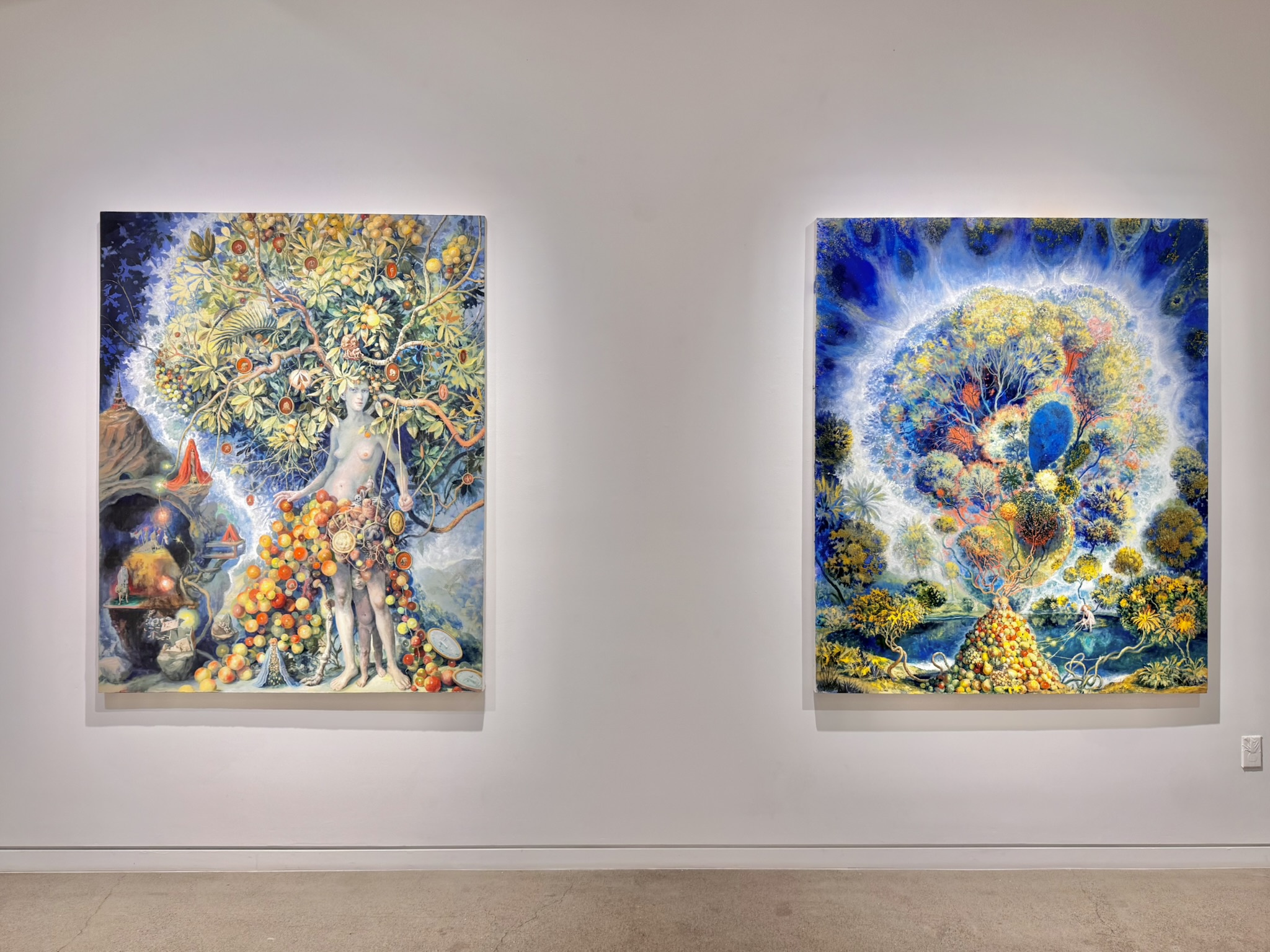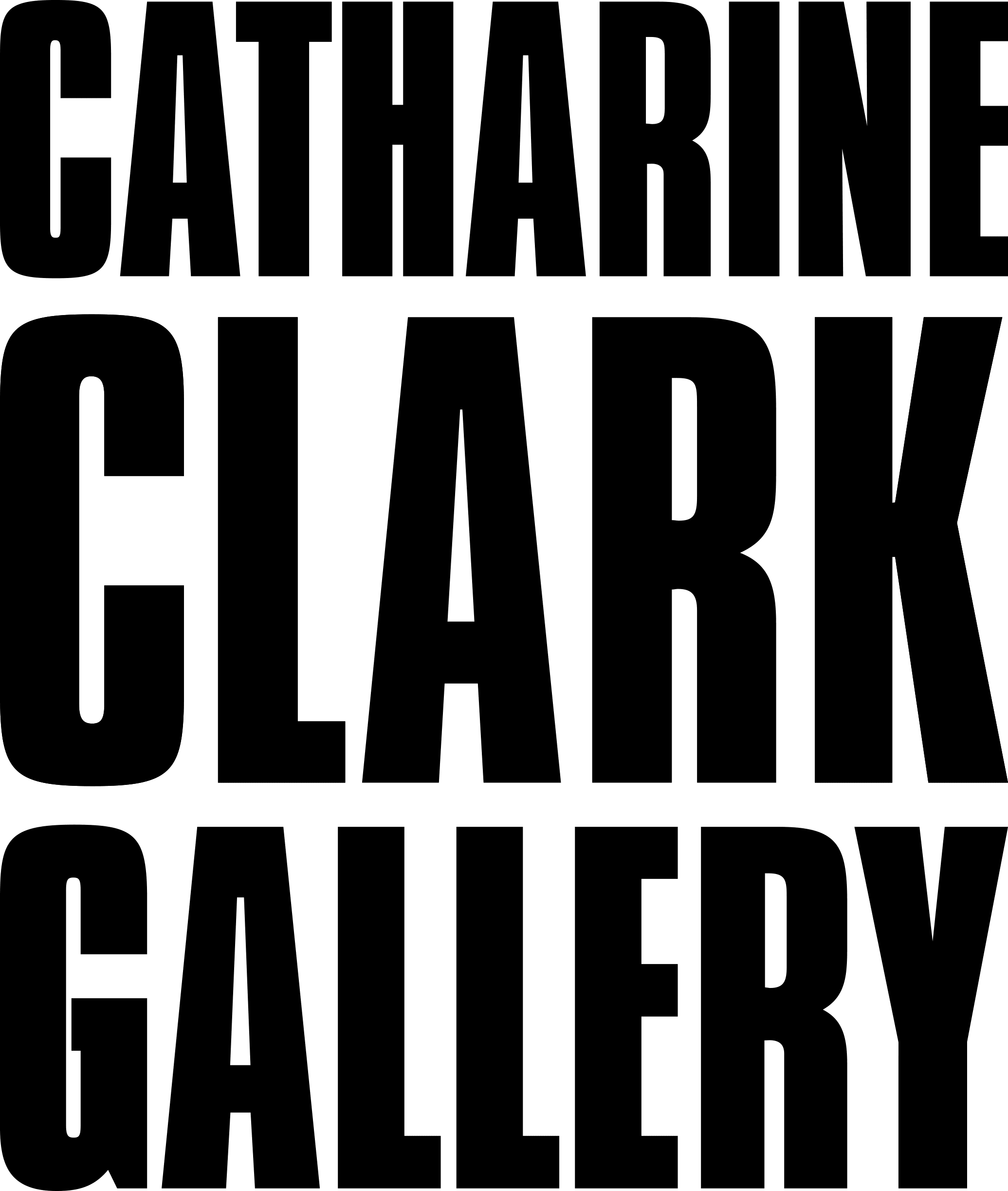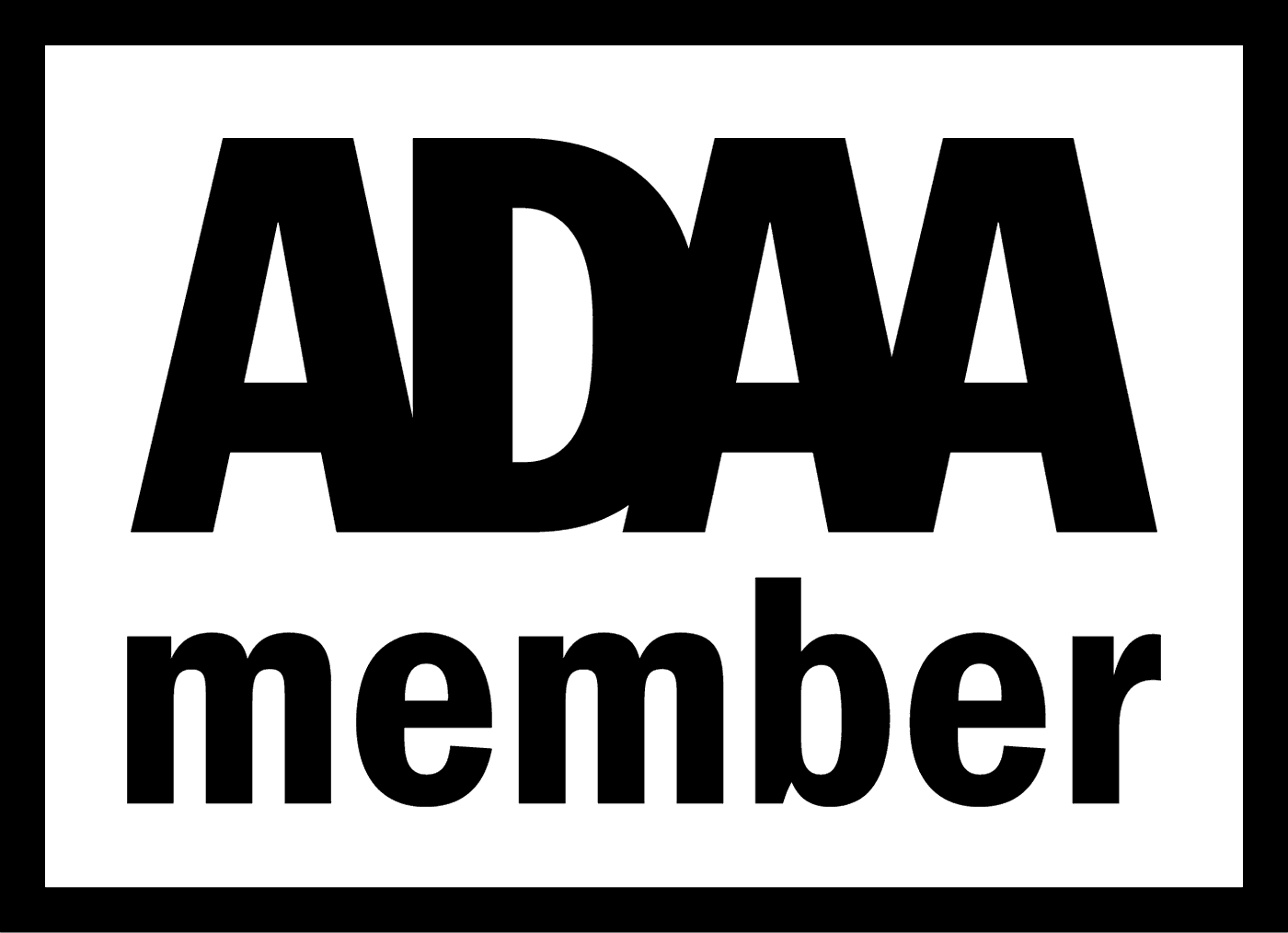Join us on Thursday, January 9th, from 5 to 7 p.m. for an artist walkthrough with Julie Heffernan.

Above: Installation view of Whether You Fall.
Julie Heffernan: Whether You Fall
On view November 23, 2024 – January 11, 2025| North Gallery
Julie Heffernan’s Whether You Fall (North Gallery) explores the pervasive sense of malaise in the world and the larger forces that shape our lives. As Heffernan writes, “This particular malaise is evident not only in the stories we hear daily—whether in the media, around dinner tables, or in conversations with loved ones—but also in how remarkably new these stories are to history. They form an alarmingly different backdrop to human life: the sick trees in Yosemite, the yellow haze on Cape Cod from California’s burning forests.”
In her lush, intricately detailed canvases, Heffernan reflects on environments that are both unsettling and beautiful. She notes, “Everything seems to be bursting out of its skin, too ripe to be contained, and then withers. My newest paintings are a way of organizing intuition through engaged randomness—a kind of call and response. Without preliminary sketches to guide me, I dive in, sometimes spilling paint, sometimes working from older paintings I never fully resolved. The aim is to get lost and find my way out. Rough marks accumulate, forming shapes and suggesting spaces, with detours and pathways that lead the eye into unpredictable places. I stumble into them and respond as the events unfold, altered by the paint. When the result is succinct, it rises to the level of embodied thought. That’s when I know I’m getting somewhere—when mind and hand are working together to create meaning.”
In the painting Self-Portrait with Empty Nest (2024), Heffernan portrays a bare-breasted woman cradling a ball-shaped nest against her abdomen, as though it were a womb. On her back, she carries fowl and other animals, their bodies bound with ribboned straps and strings that drape around her neck and cascade down to form a skirt. Her red hair curls into a baroque twist as she gazes directly at the viewer, deliberately turning away from a mirror that reflects, in muted sepia tones, a scene of men's violence: figures smashing chairs, aiming guns at one another, and leaving dead animals in their wake. The woman in Heffernan's painting stands both in proximity to and at a remove from the men in the tableau behind her. She emerges as a kind of protector, gathering the animals to her chest as though rescuing them from the chaos and danger unfolding in the background.
Heffernan’s work continues to draw on narrative sources as diverse as her Catholic upbringing, feminist art history, graphic novels, and contemporary cinema. She reflects, “I was raised on stories of martyred saints and a man who died for my sins, so storytelling has always been both edifying and eventful for me. It fueled my fascination with elaborate forms and layered narratives rich in emotional meaning. In the wake of Pop and Minimalism in the 1970s, late Renaissance artists like Tintoretto and Artemisia Gentileschi, as well as early 20th century maximalists like Florine Stettheimer, became my guides. I wanted to create large, intimate paintings of what I saw in my mind and, within that internal wilderness, go exploring. Jane Campion’s films like The Piano (1993) showed me how a change in perspective can alter meaning, and how a set of images could speak to me in a language all my own, yet as clear as my mother’s voice.”



